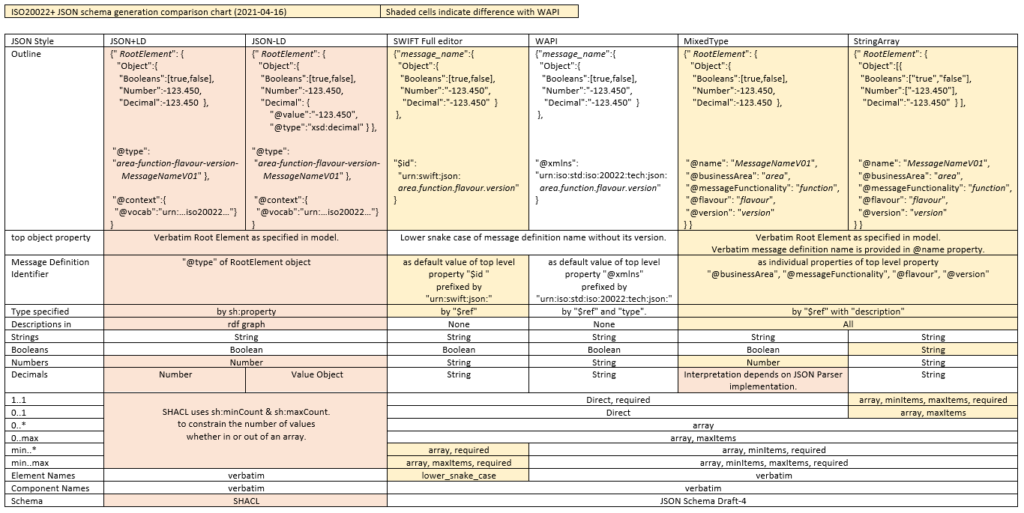JSON comparison chart
This chart compares styles of JSON Schema generation:

The differences between JSON Schema styles are:
- WAPI and SWIFT use an abbreviated snake case form of the Message Definition’s name as the top object property. MixedType and StringArray use the verbatim Root Element as modelled & provide the verbatim name in a @name property.
- WAPI uses @xmlns, and SWIFT use $id to hold an xmlns with a URN concatenating the Message Definition Identifier. MixedType and StringArray provide identifier components in separate properties.
- WAPI and SWIFT do not include descriptions in the JSON Schema.
MixedType and StringArray provide descriptions and omit the extraneous type, which is defined by the referenced item “$ref”. - MixedType encodes numbers as JSON Numbers.
Be aware that some JSON libraries do not handle big decimals. - StringArray represents every element as an array of objects or strings, including Booleans. This has the benefit of providing consistent access to items irrespective of their multiplicity or type.
- SWIFT omits the minItems in arrays.
- SWIFT represents Element names in lower_snake_case.
The differences between JSON±LD SHACL & JSON Schema styles are:
- JSON±LD is a seriliasation of an RDF graph model.
- In order for SHACL to check the shape of the graph:
- It requires a @vocab in a @context to specify members namespace.
- The message objects’s @type is the message definition identifier.
- It interprets a JSON array as links to each value in the array,
so it doesn’t matter whether a single value is in an array or not.
- JSON numbers are interpreted by JSON+LD as decimal,
whereas JSON-LD treats them as binary floats, losing accuracy.
Representing a decimal number in JSON-LD requires a value object.
JSON±LD supports prefixes as abbreviations of namespaces, whereas
JSON Schema doesn’t handle namespaces. Provided the prefix is fixed,
it is possible to generate JSON Schema that validate JSON±LD.